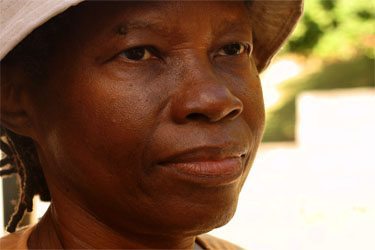Addressing Violence Against Women Living With HIV in Latin America and the Caribbean
Violence against women living with HIV has increasingly been recognized in Latin America and the Caribbean as a key issue, but there remain challenges as well as opportunities to place it at the core of the policymaking process.

“All the women living with HIV in my organization have been subjected to various forms of violence before and after diagnosis, from sexual violence, psychological, economic to institutional violence.”
This was one testimonial from a consultation conducted by the Athena Network and the Global Coalition on Women and AIDS.
Such testimonies of violence are not isolated.
In Chile, 77 out of 100 women have experienced violence, mostly at the hands of partners, fathers, and to a lesser extent strangers.
In Guatemala, women living with HIV reported that when disclosing their HIV status, they experienced increased violence from their partners, relatives, community members, and service providers.
In Panama, 35 percent of the 82 HIV-positive women involved in a study had been victims of abuse; 33 percent indicated that their family discriminated against them due to their HIV serostatus, 51 percent said that their confidentiality had been violated, and 15 percent stopped going to the HIV Treatment Clinic for that reason.
In El Salvador, 41 percent of women reported at least one form of stigma and discrimination, compared to 34 percent of transgender people and 23 percent of men.
And in the Dominican Republic, 42 percent of women reported physical violence, 37 percent emotional violence, and 22 percent sexual violence from their partners.
Yet, as in all regions, deep gender inequality means that violence against women is not always recognized by those who experience it. Olive Edwards, a facilitator at the Jamaican Community of Positive Women, said, “When we started to have a focused discussion on violence against women living with HIV, the women in our groups (where we usually vent about acts of discrimination) were silenced. … We are bound by a culture of gender inequality and norms that increase our vulnerability to violence and HIV.”
A recent report, the result of a collaboration between the Latin American and Caribbean Movement of Positive Women (MLCM+) and the Joint United Nations Programme on HIV/AIDS (UNAIDS), highlights violence throughout a woman’s life as an important underlying determinant of her vulnerability to HIV.
Drawing on interviews with women living with HIV in 14 countries, the report suggests that women’s vulnerability to HIV and its consequences may be increased by the lack of institutional responses and support to women experiencing violence. Violence within families and communities is normalized, and women internalize this attitude. Fear of violence can influence women’s decisions regarding disclosing their status, accessing services, changing their place of residence, accessing education for their children, participating in the labor market, and in interpersonal relationships with relatives, partners, and neighbors. Importantly, contextual factors such as armed conflict and violence, and racial discrimination are vital when examining the lives of women living with HIV.
How can this gap in awareness best be addressed? Back in 2006, the Center for Women’s Global Leadership found that a key gap is the “lack of systematic mechanisms for mutual learning between women’s organizations and HIV organizations.” Seven years later, this is still the case. When a draft of a document called “Ethical consideration for an integral response to human rights, HIV and violence against women,” published by a project of the Inter-American Commission of Women, was presented to a gathering of women living with HIV in Central America, discussions quickly turned to how the participants feel the wider women’s movement in the region is failing to address the specific issue of violence against women with HIV.
Yet we argue also that the failings are not just within the broader women’s movement; governments too must integrate policies and programs to address violence against women living with HIV within their fiscal policies. In the Latin American and Caribbean region, 23 out of 32 countries reported that they are implementing activities on violence against women as part of their current HIV national strategies. However, only 15 countries currently include a specific budget line for women in their HIV strategic national plan.
Fortunately, there is reason for optimism, given a strong regional history of participatory, community, and human rights work, as well as the political will and momentum evident in a number of initiatives in the region. The Inter-American Commission of Women project called Human Rights, HIV, and Violence Against Women in Central America: Integrated Responses is one such initiative, as are the collaborations between ICW Global and Latina and Development Connections, which have focused on violence against women with HIV since 2007. Organizations of people, and specifically women, living with HIV are taking a stand on violence, including RedBol in Bolivia, Red de Mujeres Guatemaltecas Positivas en Acción, and Genesis Positivo Panama, as are REDLACTRANS, a regional transgender network, and REDTRASEX, a network of sex workers.
Such examples are seeds of hope. Yet given the dimensions and social implications of violence against women living with HIV, urgent measures are still needed to strengthen such initiatives through intersectoral collaboration, research, policy dialogue, and capacity building.
